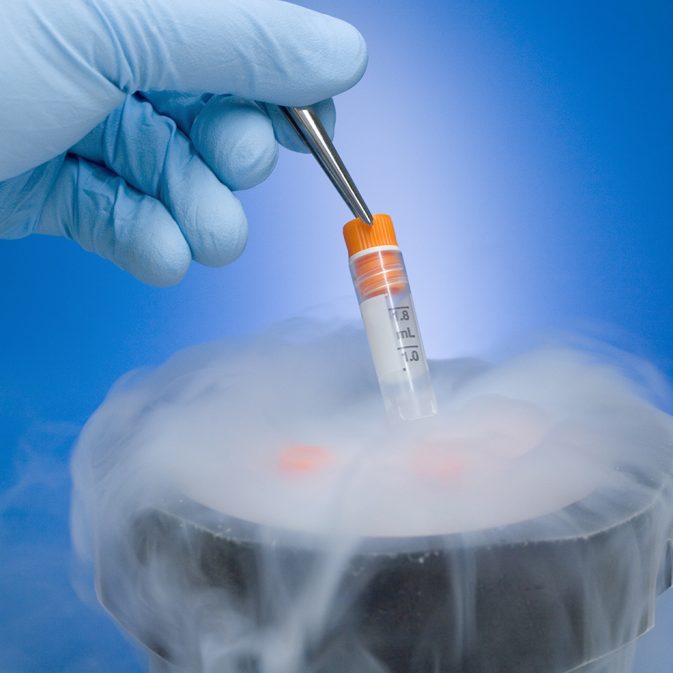Improve your chances of success with blastocyst embryo transfer
Blastocyst Culture
A blastocyst is an embryo that grows in the IVF laboratory and reaches day five (5) to day seven (7) of development.
It results from a mature egg (oocyte) fertilized with intracytoplasmic sperm injection (ICSI).
The inner cells of the blastocyst ( inner cell mass) become the embryo; the outer cells, the trophectoderm, will nourish and protect it as the placenta.
Growing embryos to the blastocyst stage allows us to determine which embryos will be most competent for implantation, helping us select the best embryo to transfer to the patient or gestational carrier.
At CACRM, we recommend blastocyst embryo transfer and preimplantation genetic testing for most patients and frequently transfer blastocysts in a frozen embryo transfer. However, we expect only 30-50% of high-quality cleavage stage (six to eight cells) embryos to develop to the blastocyst stage of growth.

Advantages of Blastocyst Embyro Transfer

Higher Success
Our experience has shown blastocyst embryo transfers seem to have higher chances of implantation to achieve a pregnancy and, subsequently, higher live birth rates.
Blastocysts may better adapt to the uterus because of extended culture and transfer at a more physiologically appropriate stage versus a cleavage stage embryo
Embryo Selection
Blastocyst embryo transfers allow us to select more competent embryo (s) and allow for a single embryo transfer and decrease the overall number of embryos transferred.
Better Timing
Naturally, implantation in the uterus occurs on days five to seven, so we are transferring embryos to the endometrium at a more optimal time.
Single Embryo Transfer
Transferring a single embryo that has reached the blastocyst stage can lead to high pregnancy rates in good prognosis patients, lowering the risk of multiple and high-risk pregnancies.
Frozen Blastocyst Embyro Transfers
We freeze most blastocyst embryos to transfer during a convenient cycle for the patient. Frozen high-grade blastocysts have over 95% survival rate after thawing.
Our laboratory has found frozen embryo transfers (FET) to have comparable and sometimes even higher success rates than fresh transfers. There can be several reasons for this:
- A frozen embryo transfer separates the ovarian stimulation for the egg retrieval from the embryo transfer.
- During the egg retrieval, IVF stimulation medications can alter the endometrium, the lining of the uterus.
- FETs allow a rest period for the uterus, which reduces the probability of severe Ovarian Hyperstimulation Syndrome (OHSS).
- It gives the uterine lining time to recover from the stresses of the egg retrieval and improves uterine receptivity.

The Stage of Your Embyro Matters
We hope you watch this informative video where CACRM Medical Director Lori Arnold explains how your embryo grows. The various stages of embryo development include:
- Selecting and incubating mature eggs
- Fertilizing eggs with ICSI
- Observing fertilized eggs dividing from early-stage zygotes of 2-4 cells to a fully expanded blastocyst on days 5-6
- Using grading systems to evaluate the expansion and enrichment of the blastocysts
